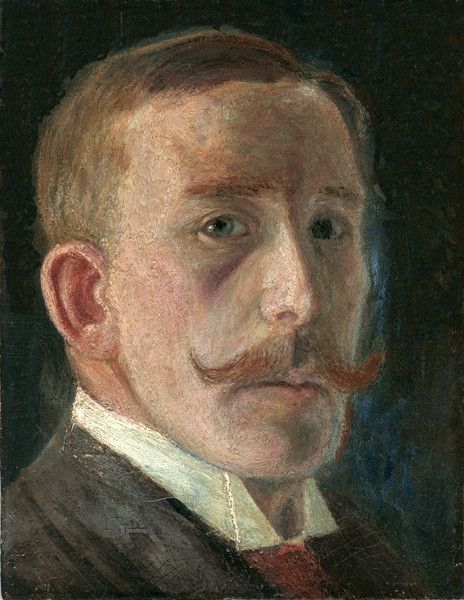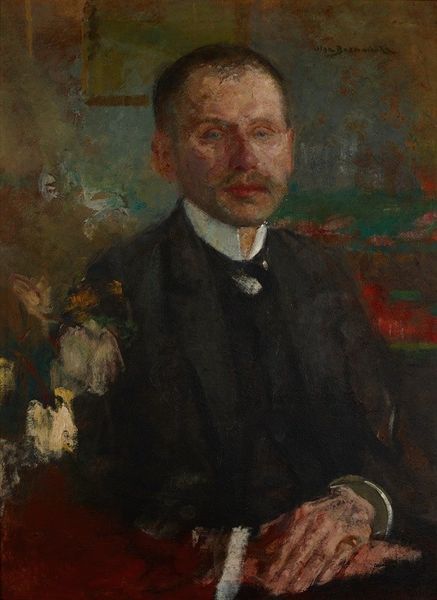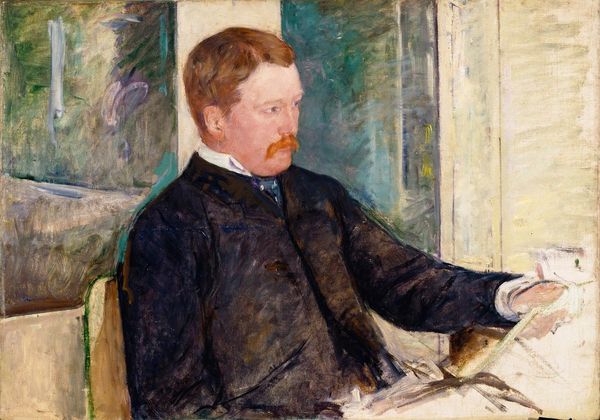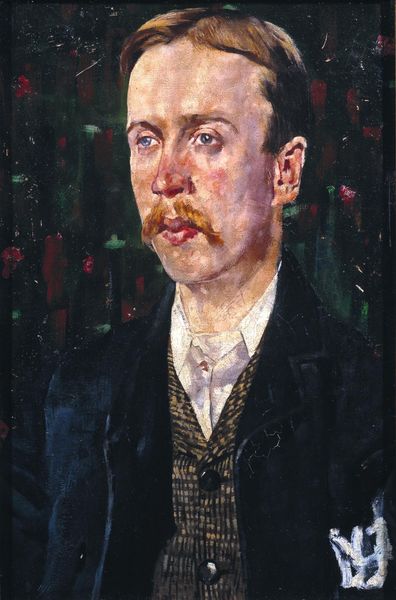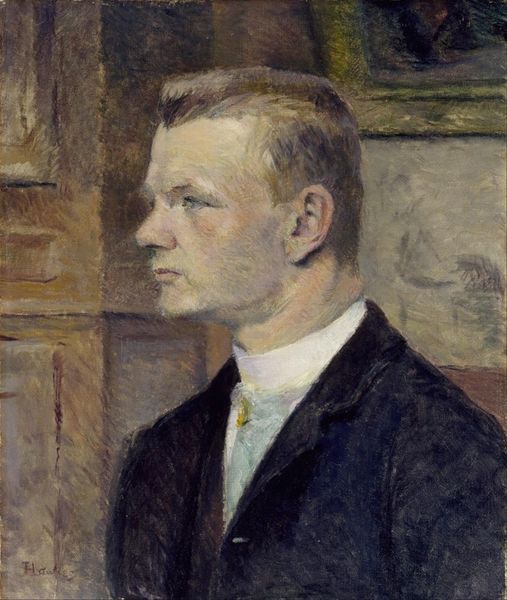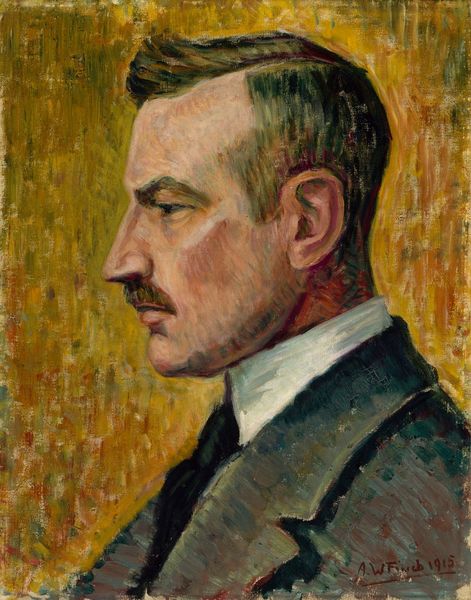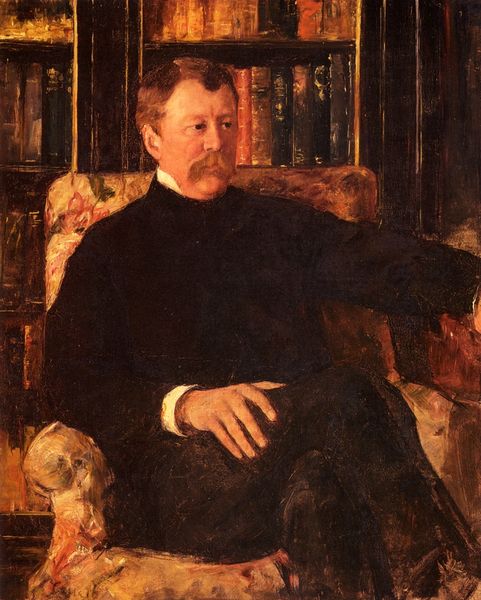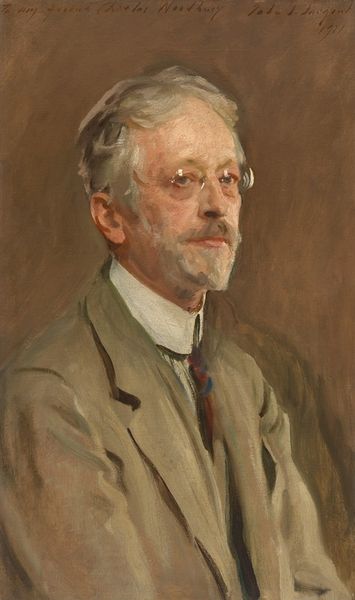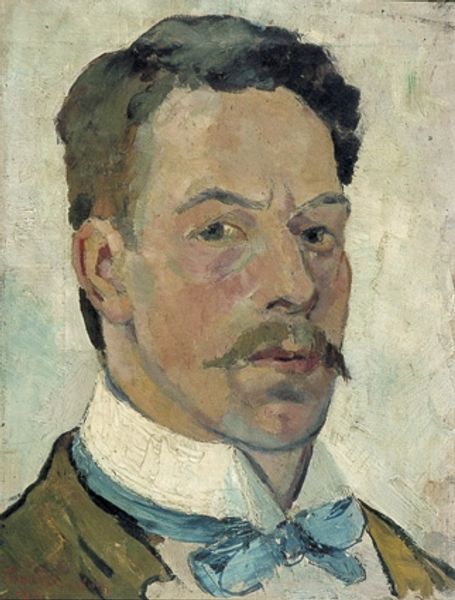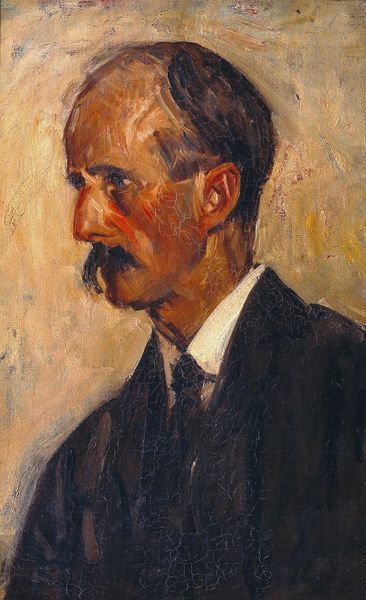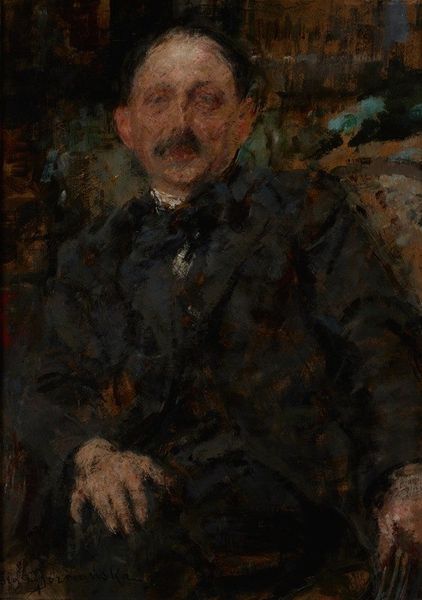
Copyright: Public domain
Curator: Immediately, I am drawn to the tactile quality of this painting. The visible brushstrokes in "Portrait of A. W. Finch," rendered in 1915 with oil paint. The raw physicality of the oil on the canvas is compelling. Editor: There’s a formality to the man. He has an air of importance. It also makes me wonder who A.W. Finch was in the cultural landscape of his time, to warrant being immortalized on canvas in this way. Curator: Finch was, himself, an artist - a painter deeply involved in the Belgian avant-garde scene, a promoter of new materials and techniques in ceramics and textiles. Enckell, who made this portrait, clearly considered Finch a significant figure. Enckell's process of applying layers upon layers of paint, reveals not only Finch's likeness but a network of relationships. Editor: You can sense a kinship between the artists. The choice of the medium is crucial – oil paint allows for such depth and layering, mimicking the complexity of human relationships and influences that existed within avant-garde art circles during the early 20th century. What's especially compelling is that both painters understood how artistic networks operated through exhibiting in group shows, art journals, and even just socializing in cafes! Curator: Precisely, Enckell used visible, tangible materials as tools of networking. The thick paint strokes form Finch’s face and reflect a collective visual identity born from shared ideas. It reminds me how intertwined were personal relationships and artmaking back then, blurring the lines between "high art" and mere craft. Editor: It challenges the traditional view of the solitary artist. Think of the societal function portraits held - often commissioned to demonstrate status. Enckell captures Finch, perhaps acknowledging him as a peer whose aesthetic judgment helped shape art history as it unfolded at that specific historical juncture. Curator: Absolutely. And if we look closely, the textured surfaces show us the active construction of Finch's image – not simply a representation but also an embodiment that exists in its materiality. This, too, spoke to Enckell’s values. Editor: So, seeing it as a public proclamation, immortalizing individuals connected to evolving cultural movements and values - almost building on that social validation conferred through visibility at key public facing events... that makes this more than "just" portraiture to me. Curator: Yes, beyond capturing a likeness, it shows that this work serves to illustrate artistic bonds and signal a changing attitude to what art is about - and who and what makes it valued! Editor: It makes you consider the entire complex framework of the art world, the dynamics of power, collaboration, and visibility… fascinating, isn’t it?
Comments
No comments
Be the first to comment and join the conversation on the ultimate creative platform.
